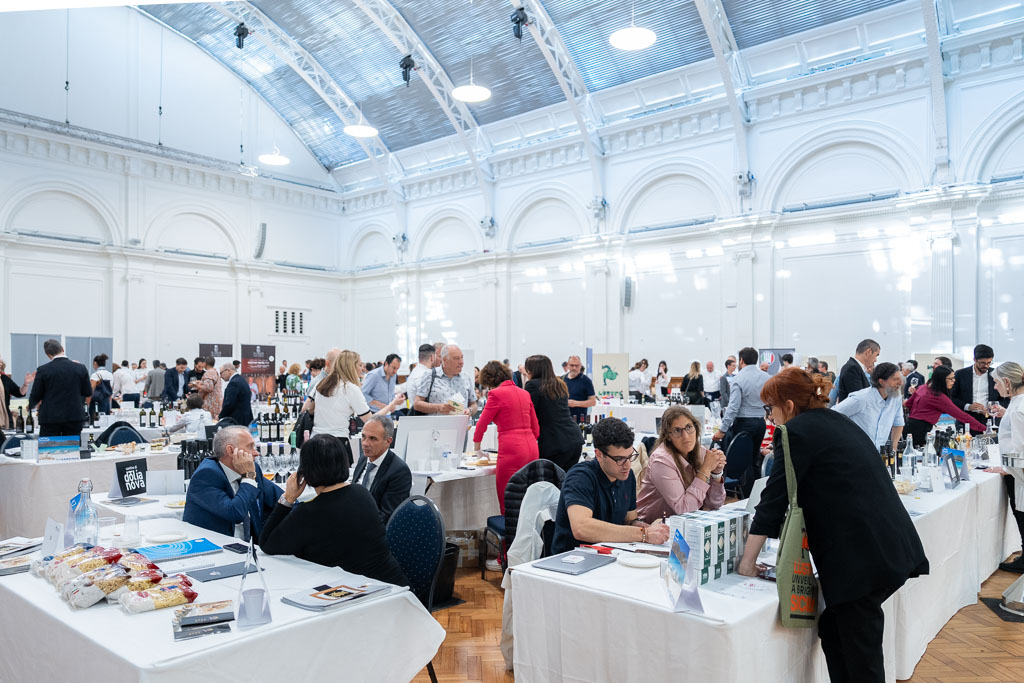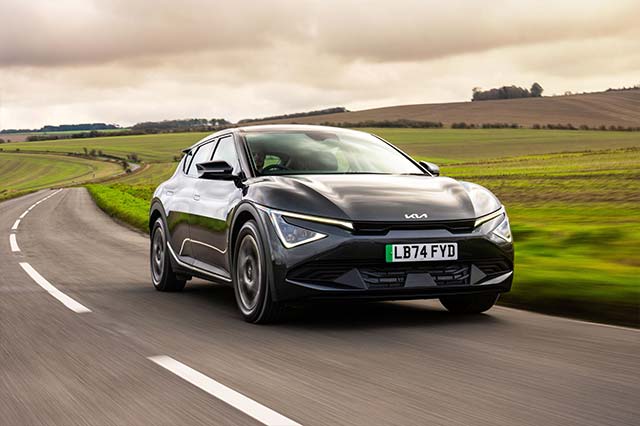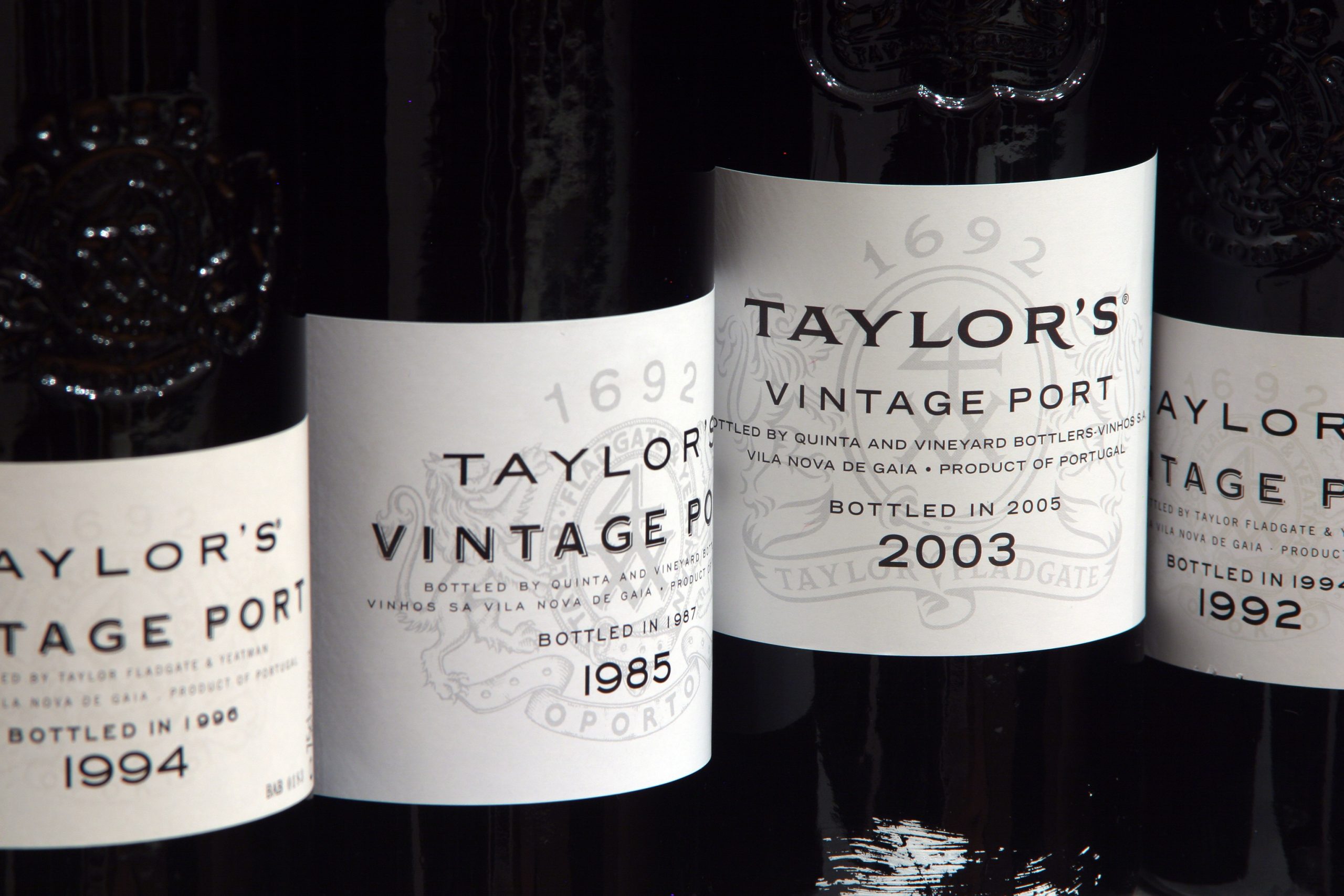This week's Real Italian Wine & Food at Lindley Hall in London offered a showcase of Italian food and drink products, many of which have not necessarily hit it big in the UK yet. db gives its roundup of some of the key takeaways from the show.
The basics of wine tasting are transferable to olive oil tasting
When we taste a wine, we swirl, we sniff, we slurp, we (occasionally) spit, and then we say that it's "balanced". When it comes to tasting olive oil, it's a fairly similar procedure.
During a tasting of Umbrian extra virgin olive oil producer Musivum's wares, it was clear that the overlap does not stop there.
Just like wine, olive oil's geographical designations and blending play a key role in determining its taste.
So, whereas the single varietal DOP Umbria Colli Martini olive oil made with the Moraiolo olive is less perfumed on the nose and "spicier" on the palate, when it is blended with other varieties, such as Frantoio and Leccino, it is notably more aromatic and complex.
Umbria deserves more attention
Umbria does not exactly qualify for the designation of a "hidden gem" anymore – direct flights from Stansted to Perugia and its relative affordability when compared to Tuscany are making this landlocked region increasingly popular with British tourists.
However, as great as it is to visit Umbria and drink the wines in situ, there were a number of producers exhibiting at Real Italian Wine & Food who are looking for ways to get their wines into the UK market.
Among those seeking an importer is Cantina Tudernum, one of the region's biggest wineries with some 170 associated growers, producing in excess of 300,000 bottles.
Although wines such as its Todi Rosso DOC are made from recognisable varieties for the UK consumer, being 50% Sangiovese and 50% Merlot, it is very much a specialist in local grapes, most notably the white Grechetto di Todi, and the infamously tannic Sagrantino.
Montefalco Sagrantino DOCG is not an easy-glugging wine, but it is not intended to be – it is at its best alongside rich, strongly-flavoured food, especially Umbria's famous sausages.
Pairing a wine with bottarga is difficult, but not impossible
On the subject of food pairings, one challenging ingredient is bottarga, the salted and dried roe of grey mullet and a signature ingredient of the island of Sardinia.
Although often grated over pasta, it can be sliced, drizzled with olive oil and enjoyed as a small, incredibly salty, umami-rich canapé, which is how it was presented by Rocca – La Bottarga at the show.
However, the downside is that because it is so intense, and lingers on the palate, finding a wine to match it can be a challenge.
Sardinia is the logical place to go, given that the Sardi have been eating the stuff since God was a boy.
Cantine di Dolianova, which has more than 1,200 hectares of its own vineyards and produces more than 4,000,000 bottles a year, grows the island's key varieties, and it is also in search of a UK importer.
Although its Prendas Vermentino di Sardegna DOC would be more than up to scratch to go alongside most seafood dishes, it would probably get slightly lost when served with bottarga.
A more suitable wine would be its Rosada, a Cannonau di Sardegna DOC Rosato which has that touch of tannins and a richness from the Cannonau to contend with the bottarga's strength, while still being refreshing.
Calabria will become a tourist hotspot in the near future
Another famously intense ingredient on show was 'nduja, the very spicy spreadable sausage from Calabria which has become something of a phenomenon in the UK. Salumificio Ussia S.R.L., based in Guardavallo on the eastern coast of the toe of Italy, produces this, as well as soppressata, which is a spicy salami which is especially good on pizza, and guanciale, a fixture of any carbonara worth its salt.
Beyond pork products, Calabria's wines are also gaining recognition, with producers such as Tenuta Regina di Sant'Angelo cultivating varieties which might be more closely associated with Sicily, such as Nerello Mascalese and Zibibbo, but do in fact have a long history in this region too.
What might ultimately push Calabria to become a destination for the gastronomically-minded traveller, as has already been seen in Puglia and Sicily, will be changes to operations at Lamezia airport.
RyanAir will be offering 220 weekly flights on 22 routes this summer, with new flights to and from cities including Madrid and Tirana.
























































































































































